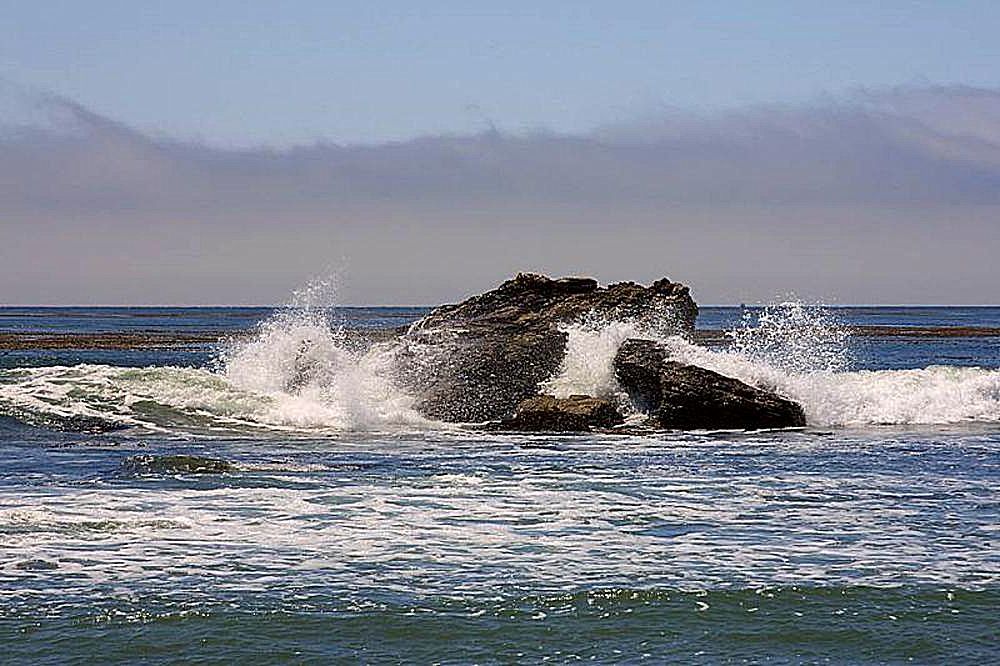Civilization
Time To Deploy Low-Yield Nuclear Weapons at Sea

The U.S. needs to break out of its post-Cold War posture and move to a warfighting doctrine with forward deployed theatre level or tactical nuclear weapons on warships to deter China and others.
China has nuclear weapons and will use them
The last decade has seen China threaten its Indo-Pacific neighbors with violence and claims on their territory including U.S. allies South Korea, Japan, Taiwan, and the Philippines. Many expect China to try and seize Taiwan by force of arms by 2027. Taiwan’s offshore front-line positions near the Chinese coast and the Pratas are under constant threat of attack and seizure. Beijing routinely pushes Japan on the Senkaku Islands and now has started with so-called ancient claims on Okinawa. The last few years have seen China force its way into the Philippines exclusive economic zone to try and seize territories it claims like Thitu inhabited by Philippine citizens.
Recent articles and reporting have focused on the threat posed to the U.S. and its allies by China and its growing military power. We have witnessed the more than doubling of China’s nuclear warheads, its large and diverse missile force, growth of the Chinese navy to 355 warships, and Beijing’s program to catch up to the U.S. on quality and quantity of fighter aircraft. The U.S. is concerned on several levels by the challenge posed by Chinese military forces in the Indo-Pacific, particularly their dual-capable cruise, ballistic and hypersonic missile forces, and Beijing’s more self-interested and aggressive intentions.
Chinese deployment
China’s missile forces are deployed to threaten a devastating attack on U.S. and allied forces and bases in the region at the outset of any conflict, while Beijing’s strategic deterrent threatens U.S. cities in North America. The U.S. is increasingly faced with the decision to either fortify its forward deployed forces and bases to meet the Chinese challenge of missile attacks or move back to less vulnerable positions and leave American allies exposed to Beijing’s threats and bullying.
The George H.W. Bush administration unilaterally withdrew theatre-level nuclear land-attack cruise missile and weapons from U.S. warships in the aftermath of the Cold War in 1991 and it was a reasonable move for the time. Just as unilateral withdrawal of theatre level nuclear weapons from U.S. warships was a confidence measure to strengthen deterrence in the early 1990s the return of these weapons to American warships at sea to confront aggressive nuclear-armed powers in the Indo-Pacific will strengthen deterrence today and into the future. The Chinese are screeching about the temporary deployment of the Tomahawk-armed Typhon system to the Philippines for the recent war games that theoretically bring the entirety of the South China Sea and coastal China into range of U.S. conventional-tipped cruise missiles.
What a comparable American nuclear weapons deployment could do
Imagine the concern and uncertainty involved for Chinese war planners if U.S. warships were carrying nuclear-tipped cruise missiles in the region. The approach would also capture the attention of other rogue states like Russia, North Korea, and Iran. By forward deploying theatre level nuclear weapons to the region on U.S. warships would counter-China’s missile force threat and threaten its homeland without the full weight of the U.S. strategic nuclear deterrent being brought to bear.
Some observers would charge that forward deploying theatre level nuclear weapons at sea would destabilize the Indo-Pacific region, at a time when the Biden administration is trying to bring down the heat with China. China will almost certainly trot out its own ‘no first use’ policy and challenge the U.S. to do the same to avoid further tensions and a potential arms race. Opponents would warn that tactical or theatre nuclear weapons raise the prospect of escalation to a full nuclear exchange. There is always the time and money argument about the cost to build this capacity and the time it takes to do so and operationalize it in the face of competing financial interests.
The PLA must strike first; their book says
On the other hand, in forward deploying nuclear-tipped cruise missiles and other tactical nuclear weapons at sea in the Indo-Pacific the U.S. would be mirroring Beijing’s force deployments with the same effect. Beijing’s ‘no first use’ pledge is not worth the paper it is written on because of China’s limited missile early warning and tracking capability that forces them to use nuclear weapons first in a crisis or face losing them in a first strike scenario.
The People’s Liberation Army’s own warfighting doctrine suggests a strong tendency toward surprise and pre-emptive attack. As for the nuclear arms race, and arms control, the race is already underway, and the Chinese are building-up their nuclear forces at a rapid rate with plans for near parity with the U.S. and Russia by 2030 with 1000 warheads. There is much greater risk of a full-scale nuclear war if the U.S. is left with no options but backing down in a war with Beijing or in launching a first strike. Forward deployed theatre level nuclear forces deployed in warships gives the U.S. options to control escalation, deter Chinese adventurism, and they are less vulnerable than land-based assets that must be hosted by allies at significant risk.
We don’t have to use them first; we just have to have them
Forward deploying nuclear weapons does not mean that they will be used in times of crisis. Nuclear weapons were deployed throughout the Cold War to deter the Soviet Union and were not used by either side. China is not constrained by any arms control treaty and not interested in being so restricted.
China is a strategic rival and threat unparalleled by any power the U.S. has faced to date with ever increasing conventional and nuclear military capabilities and a seeming willingness to bully and subjugate U.S. allies, push the U.S. out of Asia, and the Western Pacific. If the U.S. is to avoid this scenario and the loss of its global leadership role it must push back China in the Western Pacific with its allies and forward deployed theatre level nuclear weapons on U.S. warships as a necessary component of any warfighting strategy to contain Beijing and avoid disaster.
This article was originally published by RealClearDefense and made available via RealClearWire.
Joe Varner is the author of Canada’s Asia-Pacific Dilemma, former Director Policy to Minister of National Defence the Hon. Peter MacKay in the Harper government, and a former Adjunct Scholar at West Point’s Modern War Institute.
-

 Civilization4 days ago
Civilization4 days agoTrump’s Venezuela Gamble and America’s Shifting National Security Strategy
-

 Civilization4 days ago
Civilization4 days agoOperation Absolute Resolve: Anatomy of a Modern Decapitation Strike
-

 Civilization4 days ago
Civilization4 days agoTen Reasons To Cheer the Arrest of Maduro
-

 Civilization2 days ago
Civilization2 days agoOne Fell Swoop: Lawsuit Eyes Death Blow to Racial Preferences
-

 Civilization18 hours ago
Civilization18 hours agoTrump’s New Doctrine of Precision Deterrence
-

 Executive2 days ago
Executive2 days agoWaste of the Day: $1.6T in Wasteful Spending in Rand Paul’s “Festivus” Report
-

 Civilization4 days ago
Civilization4 days agoTrump’s New Executive Order on Space Has the Right Stuff
-

 Guest Columns3 days ago
Guest Columns3 days agoAdvice to Democrats Regarding Maduro Arrest: Resist Reflexive Opposition




